10 Best Note-Taking Apps for Students in 2025
Best Student Notes Apps
11th Dec, 2024
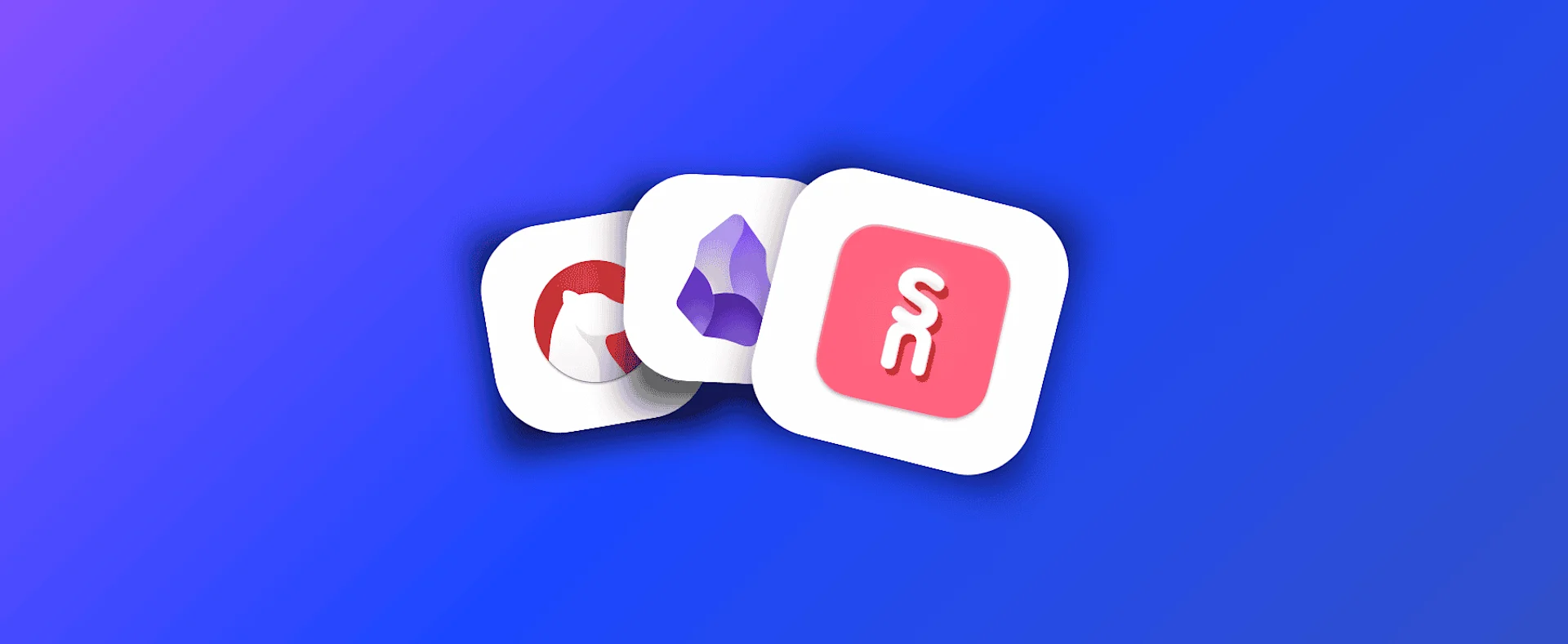
Take better notes in class or bring ideas together in one base. These note-taking applications are perfect for students that need an all-round notes day-to-day.
Looking for smarter tools to study & take notes?
Note-taking apps are just one of the ways to collect notes for revision & research. The best thing is that AI is getting smarter for students to combine their notes and get better insights ready for revision and focus time. There are now tools for AI flashcards, summaries, and research capture for bibliographies.
Many students are investing in technologies like this to get ahead in their studies, thinking more strategically about how they approach note-taking instead of simply collecting everything and hoping for the best.
What do students want?
One of the most important factors for students is cost.
- Low Cost - Reducing the cost of note-taking apps for students is essential.
- Easy to Use - Simple & easy to get notes captured and organized.
Keeping costs down helps reduce overheads while at college or university, so apps with a generous free tier are vital for long-term use. Another crucial factor is the ease of use, whether for quickly capturing information, using extensions to combine research from multiple sources, or AI-powered features to summarize notes.
Benefits of Note-Taking For Students
Students can expect note-taking apps to help in the following ways:
Better Organization
Note-taking apps, in general, are great systems to bring knowledge together and store it. Many people consider this the base for all their ideas and planning. As a student, you need ways to get a competitive advantage against others in your field, and one of those ways is being better organized, which is a bonus of note-taking.
Smarter Recall
Not just with AI features, note-taking can help you remember things better. Systems like the Cornell note-taking system have helped to prove the benefits of structured note-taking and its impact on success in studies. AI features can also help to summarize information or help you revise more effectively, without the stress of planning sessions.
Best Student Note-Taking Apps
Let's commence the list of the most recommended tools by us:
1. RemNote
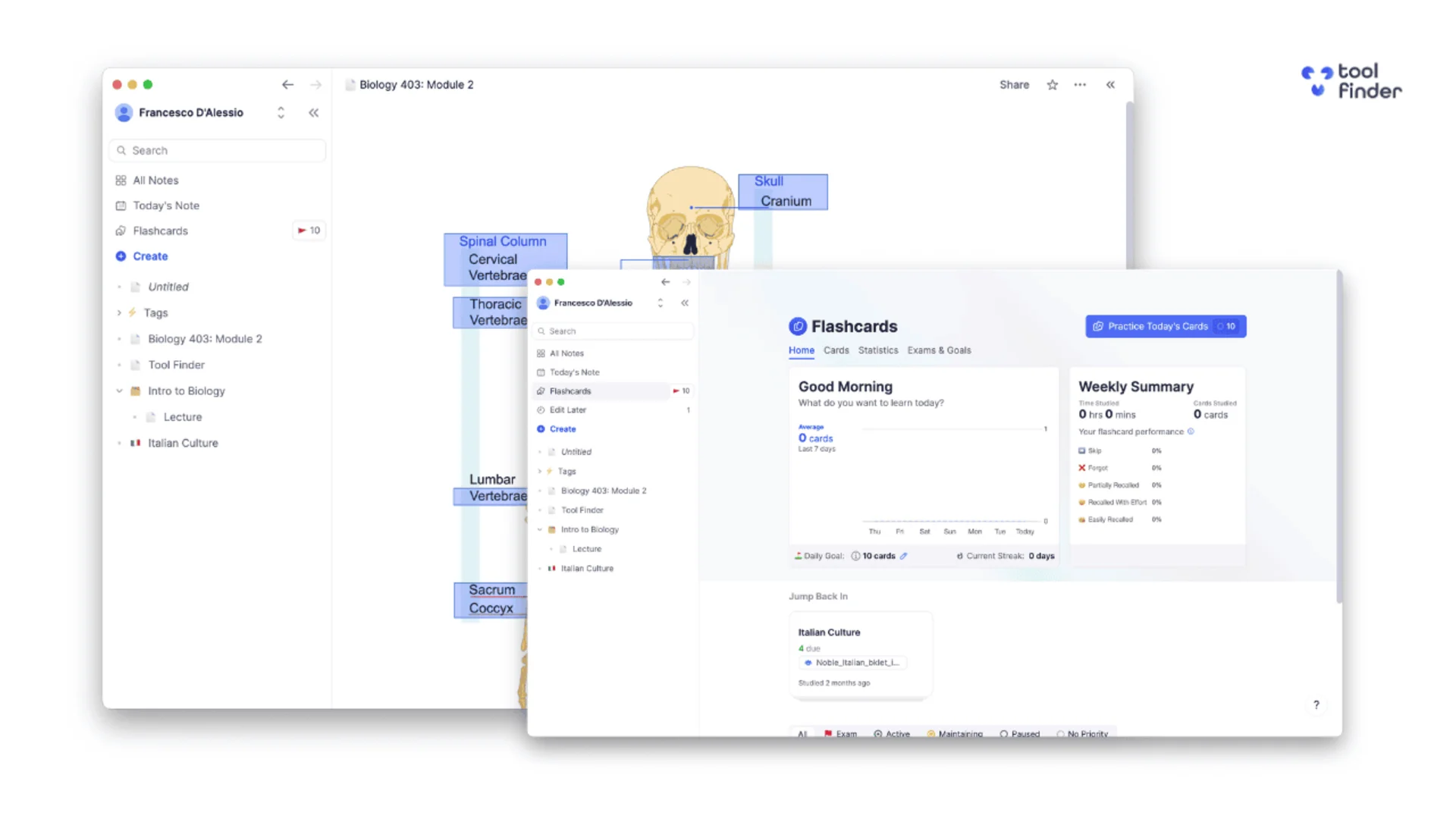
RemNote is a popular choice due to its extensive free plan and a standout feature: flashcards.
Flashcards are excellent for studying and use spaced repetition to help students learn and absorb information effectively. The app’s AI can automatically convert notes into flashcards, saving time and allowing students to focus on revising rather than administrative tasks. The premium version includes advanced PDF tools and additional AI functionality, but the free version offers plenty for student needs.
Pros
- Unlimited flashcards
- Easy-to-use features
- Can extend to PKM use for post-college
- Analytics for flashcards insights
- Way to add daily notes for journaling
Cons
- It can be expensive for a premium
- Many people might find it overwhelming
Pricing:
RemNote costs $8 per month (billed annually) for premium. It is free to use and has no limits.
2. Microsoft OneNote
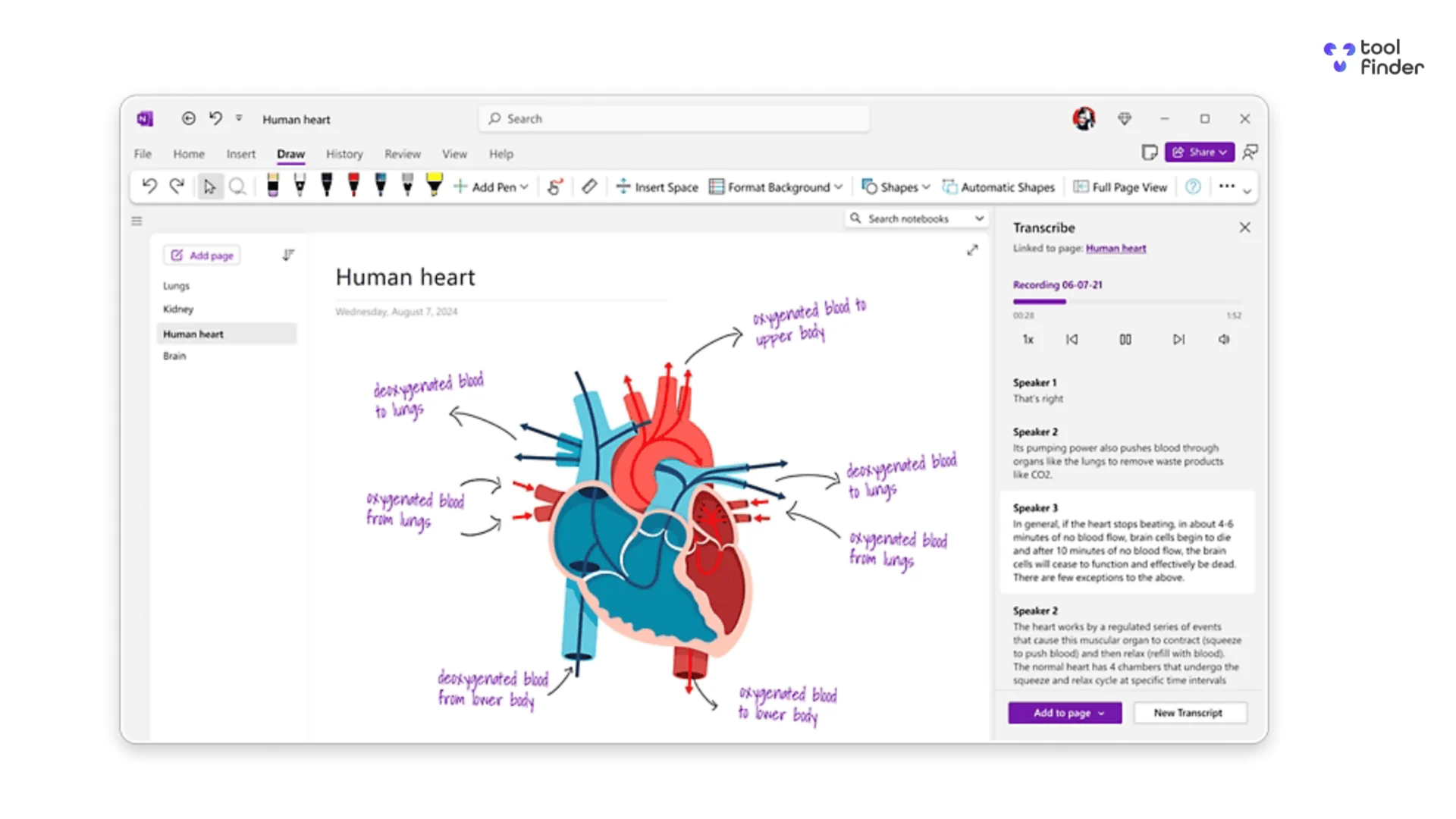
Microsoft OneNote is a staple for students, especially those with access to a Microsoft license through their university or college. This gives them free access to OneDrive and OneNote, offering a seamless way to organize notebooks. It's a hot recommendation if you have a Windows device, too.
Features like sketching tools, well-developed Windows apps, and familiarity with Microsoft Word make it highly user-friendly. The new Copilot AI can even help students turn notes into quizzes or provide deeper insights, making it perfect for revision.
Pros
- Easy to use
- Comes with Microsoft accounts
- Great sketching abilities
- Perfect for Windows devices
- Designed for educators
Cons
- Can look dull & old-fashioned
- No bi-directional linking or PKM abilities
Pricing
Microsoft OneNote is free to use with a Microsoft account.
3. Supernotes
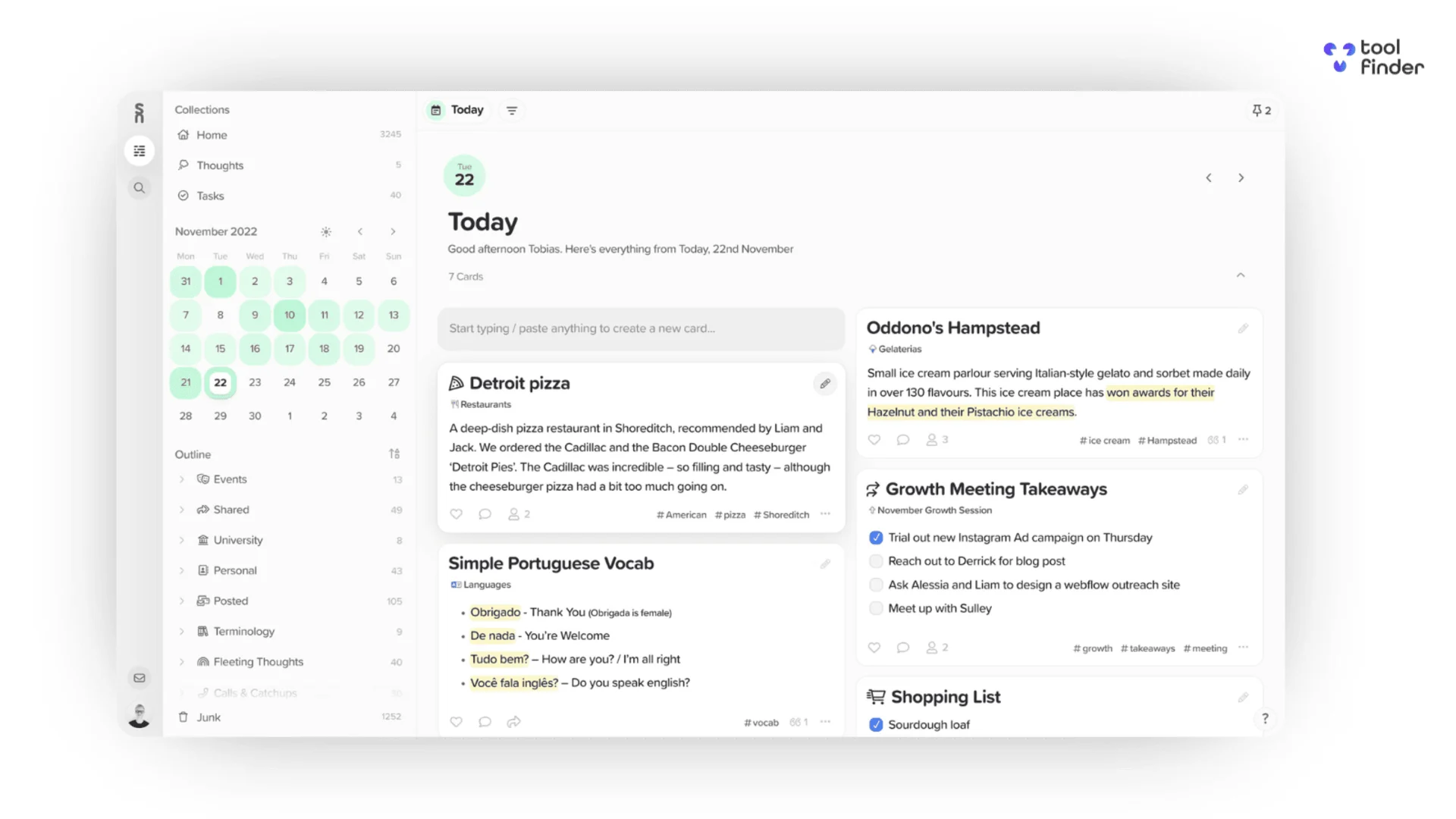
Supernotes is designed around a card-based system, making it ideal for students who prefer visual note-taking. The cards allow you to organize your thoughts clearly and connect ideas seamlessly. This is particularly useful for creating structured content, such as research notes or summaries of lectures. One of Supernotes’ most appealing features is its collaboration capability, allowing you to share cards with classmates easily. For instance, if a peer misses a lecture, you can send them the relevant cards in just a few clicks.
The free plan offers up to 100 cards, which is enough to get started, while the premium plan includes grammatical AI tools to refine your notes and make them visually polished. Supernotes is available across devices, making it highly functional for quick note-taking, whether during a lecture or while studying.
Pros
- Security-focused
- Offline and fast-loading notes
- Comes with all apps (including Linux)
- Independently developed tool
- Premium pricing isn't crazy
Cons
- The free plan limits you to 100 notes.
- Can be overly complicated for some people
Pricing:
Supernotes are free for up to 100 cards but charge $7.61 per month for premium.
4. Notion
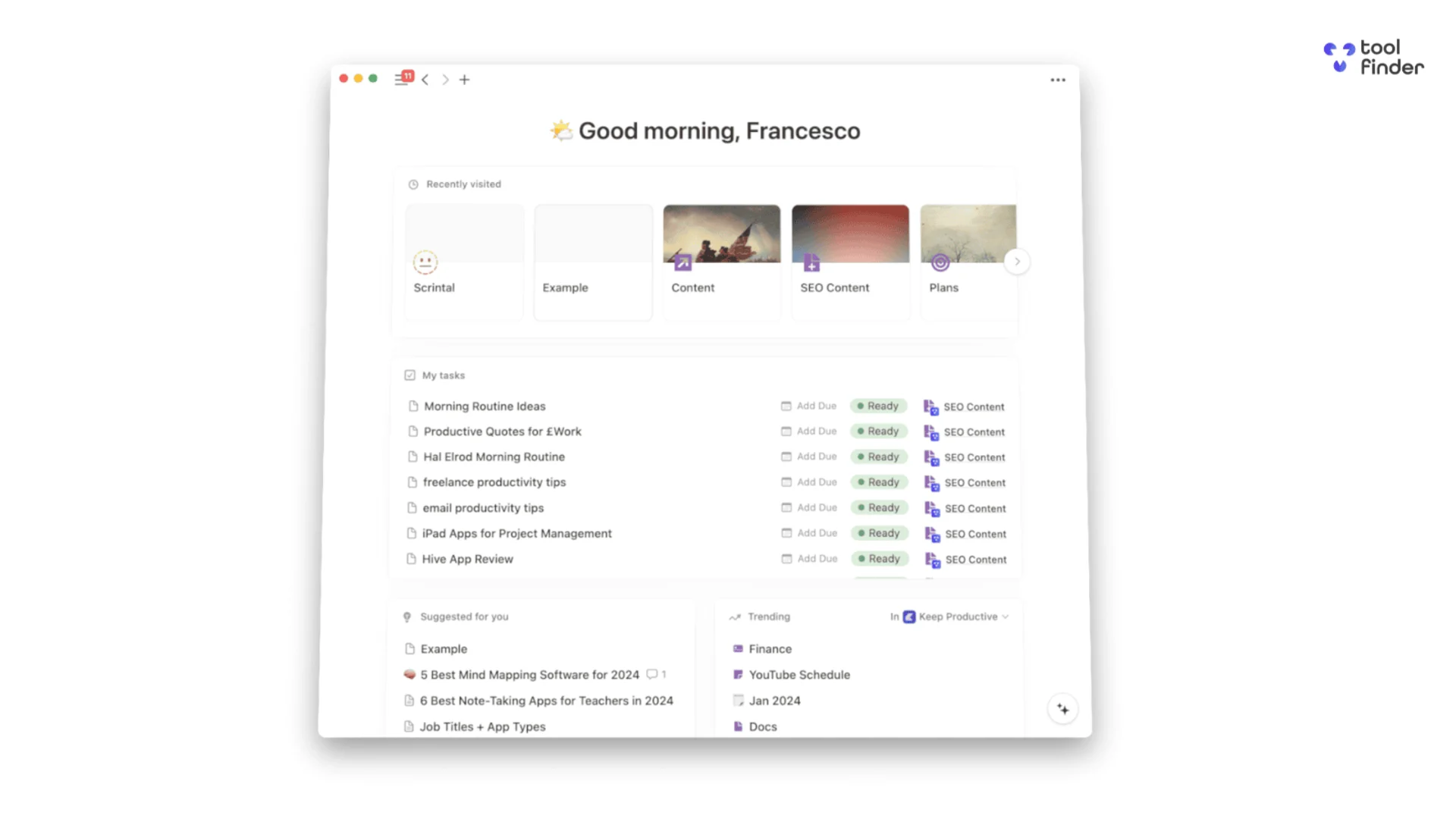
Notion is a super app for students, combining note-taking, task management, and collaboration into one platform.
The free academic plan is incredibly generous, providing unlimited notes and additional features for those who sign up with a .edu or .ac.uk email address. Notion is beneficial for organizing coursework, thanks to its templates that help create structured workspaces.
Students find Notion’s backlinking feature particularly valuable for connecting notes and its ability to embed media for more dynamic content.
While some AI features, like Q&A for deeper analysis, are part of the premium plan, the free version includes plenty of tools to get started. With its functionality and accessibility, Notion is a strong choice for students across disciplines.
Pros:
- A flexible workspace for a range of media
- Optional views for managing databases
- Free and unlimited blocks
- Always adding new features
Cons:
- It can be difficult to learn
- Does take time to set-up and organize
Pricing:
Notion is free with unlimited blocks and has premium pricing starting at $8 per month, billed yearly.
5. GoodNotes
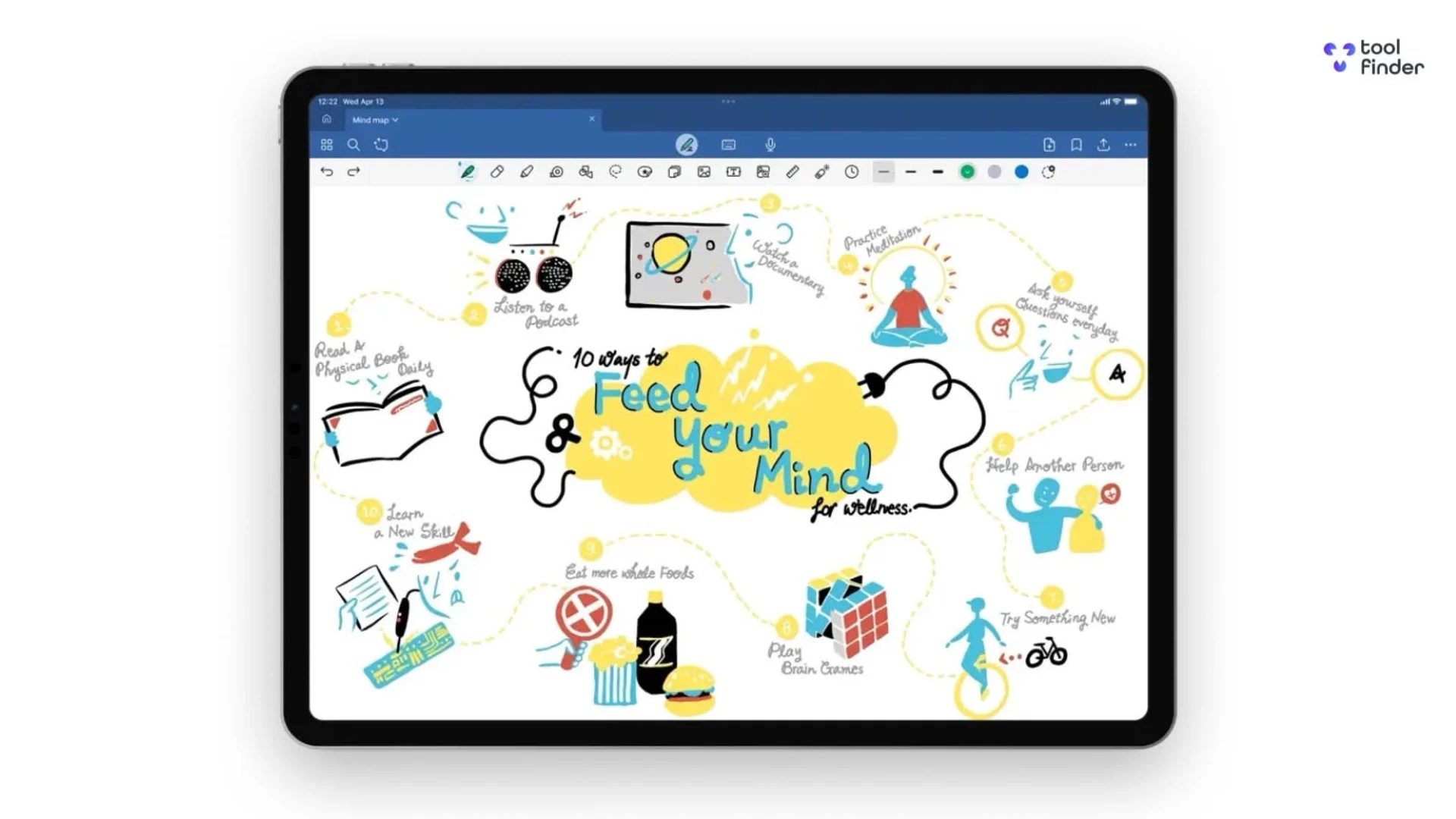
GoodNotes is a top choice for iPad users, offering stylus-friendly features for visual thinkers. It’s ideal for sketching ideas, taking detailed notes, and using AI to refine handwritten content. The yearly cost of $9.99 is highly competitive, making it one of the best premium options for students.
Goodnotes offers good notebook customization, including stickers, templates, and even a big store (locked under premium). This level of customization appeals to many students wanting a BuJo-style notes app with sketch abilities.
Pros:
- Ideal for those who use iPads
- Works well with styluses to make sketch notes
- The reasonable $9.99 per year pricing
- Great for student note-taking
- Abilities like ruler, scaling & customizations for toolbar
Cons:
- It might not be for everyone
- Can be difficult to use if you aren't good at sketching
6. Bear Notes

Bear Notes is a simple and elegant app for Mac and iOS users who prefer offline functionality. It supports markdown, media organization, and even LaTeX for mathematical notes. It’s handy for students with newer Apple devices who need a lightweight and affordable app. The yearly cost is $29.99, making it budget-friendly.
You can organize your notes by focusing on hashtags and note regular notebooks, meaning you can create nested hashtags perfect for multiple spanning notes. This means that a note with a revision for an exam that spans numerous classes could be connected to various places. You can use the sketch abilities on the iOS app to handle ideas and thoughts better when bringing them together. Perfect for markdown lovers.
Pros:
- Comes with a markdown editor
- Reasonable pricing per year
- Easy to use for all types of note-takers
- Well-developer and respected developer
- Bunch of themes and app icons to customize
Cons:
- It might be too basic for some
- Limited to iOS and macOS devices
Pricing:
Bear Notes is priced at $29.99 per year for the premium experience.
7. Obsidian

Obsidian is another PKM-focused app and a great choice for students who want a local-first, markdown-based solution. It supports bidirectional linking and features a visual Canvas tool for brainstorming and connecting ideas. This makes it highly appealing for research projects and thesis work.
Obsidian also includes a web clipper, which makes it easy to gather resources online and integrate them into your notes. The free version is highly functional, offering a comprehensive toolset for students without requiring a subscription.
Pros:
- Comes with PKM abilities
- Powerful graph view for networked notes
- Obsidian adds new features fairly regularly
- You can switch on and off features
- Free & easy access
Cons:
- Lacks project management
- Does not have database abilities
Pricing:
Obsidian is free to use with no limits; there is a $4 per month pricing for E2E notes & sync.
8. Capacities
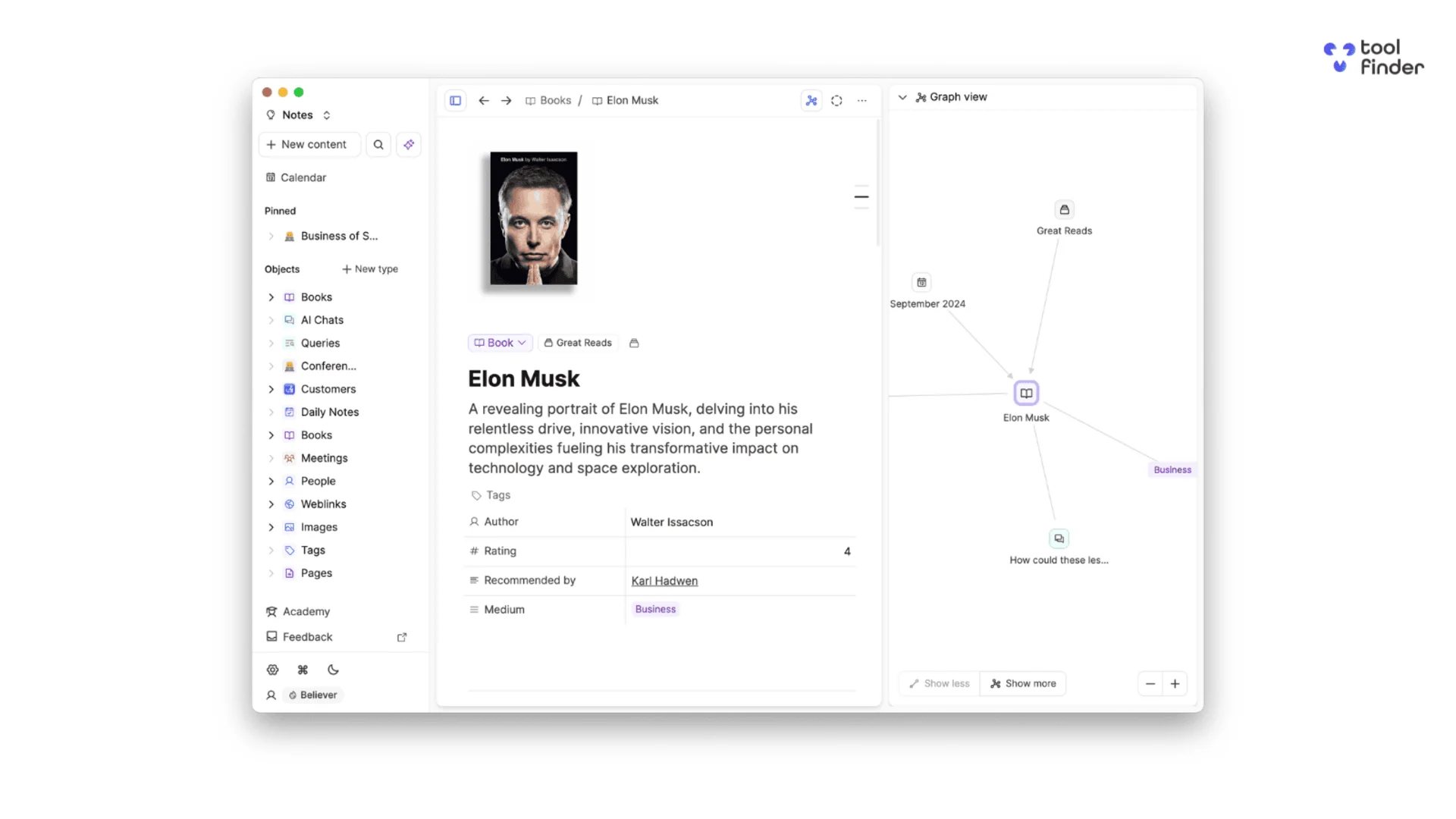
Capacities is an attractive note-taking application for students interested in personal knowledge management (PKM). It helps you organize ideas visually in a graph view, connect notes through bidirectional links, and structure information using objects. Capacities is particularly valuable for students in research-intensive programs, such as master’s or PhD studies.
The app’s daily notes feature helps collect ideas and manage tasks alongside notes. Capacities’ approach to structuring content sets it apart from more traditional apps, making it a unique choice for serious academic work.
Pros:
- Beautiful Notion-like design
- It comes with a calendar mode for daily notes
- Works well offline with near offline functionality
- Comes with AI features for chatting with notes
- Easy to use once you get started
Cons:
- Lacks powerful databases
- It can be complicated for the average note-taker
Pricing:
Capacities are free to use, with a $9.99 per-month upgrade needed to access premium abilities.
9. Amplenote
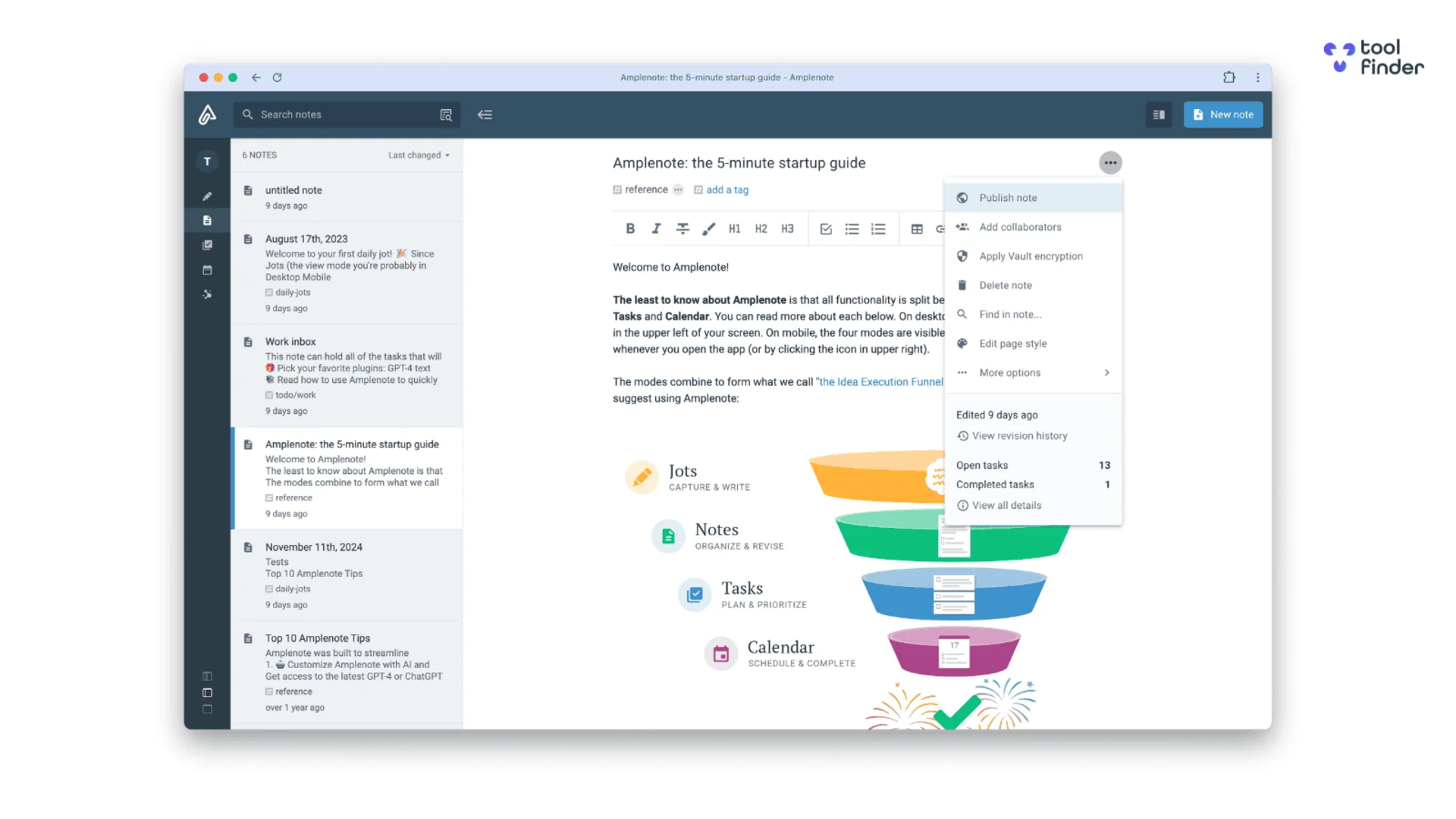
Amplenote is geared towards students who want a more comprehensive productivity system. It’s ideal for those juggling tasks, deadlines, and academic notes. One of its standout features is Task Score, which prioritizes tasks based on their importance and when they should be completed. This feature can be a game-changer for students trying to balance their workload.
Amplenote’s free plan includes a range of note-taking and task management features. If you need more, its premium plan is reasonably priced at $6 per month and includes calendar integration, which further streamlines productivity.
Pros:
- Combines tasks, notes & calendar
- It comes with a daily note feature called Jots
- Designed for individuals looking for an Evernote replacement
- It has many GTD-like features for managing the workload
- The task score feature is brilliant for prioritizing tasks
Cons:
- Can be too intense to learn fro some people
- The design isn't as attractive
10. Lunatask

Lunatask combines note-taking with task management, offering a secure and encrypted platform that ensures your data is private. This makes it a great option for journaling or handling sensitive academic projects. Lunatask is also regularly updated, adding new features that make it more versatile.
For students balancing complex schedules, Lunatask’s integration of tasks and notes provides a centralized productivity hub that simplifies organization.
Pros:
- Secure E2E task management
- Easy to use app with good simple design
- Comes with notes & journal
Cons:
- Not for everyone
Pricing:
Lunatask costs $6 per month.
Choosing the Right App?
Now that you’ve explored the range of options, choosing a note-taking application that fits your needs as a student is essential. Each app offers unique features, and the right choice depends on your personal preferences, study habits, and academic requirements. Here’s a breakdown to help you decide:
Best All-Round Note-Taking Apps
If you’re looking for a well-rounded solution that is easy to use in a variety of situations—whether for lectures, group work, or personal study—we recommend:
- Notion: Offers a free academic plan with powerful templates and collaboration features, making it great for managing tasks and organizing notes.
- Microsoft OneNote: Excellent for students with Microsoft licenses, offering familiar tools, free access, and interactive features like Copilot AI.
- RemNote: A strong choice for students who want to combine note-taking with spaced repetition flashcards for effective learning.
Best for Personal Knowledge Management (PKM)
For students engaged in research or those who want to organize extensive notes in a highly structured way, PKM-focused apps are ideal. These apps help you visualize connections between ideas and manage complex information:
- Obsidian: Great for its bidirectional linking, markdown-based note storage, and Canvas feature for visualizing ideas.
- Capacities: Offers a unique object-based organization system, perfect for creating structured knowledge bases.
- Supernotes: Combines visual note cards with collaborative capabilities, making it suitable for both individual study and group projects.
These tools are especially useful for students working on research-intensive assignments, dissertations, or collaborative academic work.
Best for Task and Productivity Integration
If you want to streamline your academic life by combining note-taking with task management, consider:
- Amplenote: Its Task Score feature automatically prioritizes tasks based on urgency and importance, helping students stay on top of deadlines.
- Lunatask: A privacy-focused app that integrates tasks and notes seamlessly, with encryption for added security.
These apps are excellent for students managing tight schedules, balancing coursework, and keeping track of tasks and projects.
Best for iPad Users
If you use an iPad or stylus for taking notes, these apps stand out:
- GoodNotes: Perfect for visual thinkers, offering tools for sketching and annotating notes, with affordable premium pricing.
- Bear Notes: A lightweight, elegant option for Mac and iOS users who prefer offline functionality and markdown support.
Both apps excel in stylus-friendly features, making them great choices for students who prefer handwritten or visually structured notes.
Oops, undefined is still in development...
Weekly Roundup: Explore People's Productivity Tools
Become a reader to our newsletter exploring what productivity apps people use on a daily basis to get things done